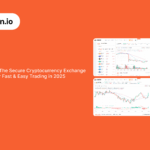Ever notice crypto acts weird on weekends? You’re not the only one. Traders, data analysts, and even bots have been scratching their heads over this for years. One moment, the market feels like it’s in a deep sleep. A few hours later, it’s throwing wild swings nobody asked for. The “weekend effect” is a pattern that stirs up curiosity and confusion across the board, as per top traders.
So, what exactly is this weekend effect, and how does it impact traders? Time to find out.
What Exactly is a “Weekend Effect”?
The term refers to noticeable changes in price movement, volume, or volatility during Saturdays and Sundays, compared to weekdays. It pops up in both traditional finance and crypto, but the flavor’s different in each.
In the stock world, this effect got attention because returns on Mondays often dipped. In crypto, it’s less about returns and more about erratic behavior. Sometimes it’s low activity. Sometimes it’s wild volatility. Sometimes both, back-to-back. Given the volatile nature of the crypto, a lot of traders still disagree on the effects of this “Weekend Effect.” But experts believe that the data suggest the weekend effect might be something to look at.
Weekend For Cryptos is Different
No banks, no problem… or is it?
Crypto never sleeps. That’s one of its selling points. But even though the market stays open 24/7, traditional finance doesn’t. Over weekends, banks, payment processors, and even big institutions hit pause.
Some experts believe this pause throws a wrench in how liquidity flows in and out. You can still buy and sell crypto on Saturdays, sure, but moving money between fiat and crypto becomes a lot slower sometimes. That tightens access. As per excerpts, fewer inflows mean thinner books, and thinner books often mean more price swings.
Volume dries up
Most professional traders take the weekend off. That includes folks running big desks, fund managers, and institutional players. Retail traders stick around, but they don’t move volume like the pros do.
When volume dries up, small trades have a bigger impact. So a single $500,000 sell order could nudge the market more than usual. As per some professionals, this is what creates flash crashes or random spikes on a quiet Saturday evening.
Bots don’t nap
While humans are chilling, AI bots stay busy. Weekend action tends to be dominated by automated systems running on momentum, arbitrage, or simple trend signals. Some of these bots are tuned to sniff out thin liquidity zones and poke at them.
So, if a bot detects low volume around Bitcoin on Sunday afternoon, it might place strategic trades to exploit that. The result? Artificial-looking pumps or dumps that feel out of sync with market sentiment.
Weekend Volatility and Data
Several market research firms have sliced and diced historical charts to find recurring weekend trends. Some observations pop up more than others:
- BTC and ETH tend to experience lower trade volumes on weekends
- Sunday evenings (UTC) often show sharper price moves than Saturday mornings
- Weekend volatility doesn’t always follow the dominant weekday trend
That last one especially gets attention. Let’s take a hypothetical example. Bitcoin has been climbing all week. Come Saturday? Prices stall or even retrace hard. It doesn’t match retail hype or macro narratives, and that disconnect is what keeps the experts wondering.
Why do Sunday evenings feel extra dramatic?
Sunday evenings (UTC) overlap with Monday morning in Asia. That’s when traders in Korea, Japan, and Singapore start logging back in. At the same time, US-based retail folks check charts one last time before the new workweek.
And experts believe that this is where fresh demand from the East and last-minute reactions from the West kick in. As per these experts, there are no institutional anchors to hold the market still. And that combo is what may set off unexpected price moves.
Also, Sunday evening is when CME Bitcoin Futures open. That reopening creates a fresh reference point for price. Some traders monitor the CME gap, if crypto prices diverged over the weekend from Friday’s close, Monday’s action often gravitates toward closing that gap.
The “CME Gap” theory adds fuel to the fire.
There is one more interesting theory that some experts believe impacts the “Weekend Effect.” It’s called CME (Chicago Mercantile Exchange) Gap Theory. Here’s how it works:
- CME Bitcoin Futures close Friday afternoon (Chicago time).
- They reopen Sunday evening.
- Any price movement between those two times creates a gap on the CME chart.
Experts believe these gaps tend to get filled later in the week. Traders watch them like hawks. Some even treat them as mini roadmaps. So if Bitcoin moved up by $800 while CME was shut, some folks expect a short-term dip to close that window.
The CME Gap theory doesn’t drive price, but some experts believe it might influence enough traders to become self-fulfilling now and then.
Altcoins and Weekend Effect
Altcoins are another piece of the puzzle here. Some experts suggest that Altcoins take weekend volatility up a notch. They believe that when Bitcoin chills, risk appetite shifts. Some retail traders go hunting for double-digit moves in low-cap tokens.
Without heavy resistance from high-frequency traders or market makers, these coins dance to their own beat. And these experts say this is the reason why even coins with low volume can see 20% swings with a few hundred grand traded.
But experts also caution that it’s not all green candles and weekend moonshots. That same lack of liquidity can trigger violent dumps when big holders offload. And with no strong support levels active, prices spiral fast.
What About DeFi?
DeFi protocols keep running through smart contracts. But that doesn’t mean users stay active. Weekend DeFi usage usually dips, especially for tasks that involve bridging, staking, or swapping large volumes.
Some analysts observe that gas fees tend to fall over weekends due to this lower activity. That makes complex strategies cheaper, but the counterpoint is that slippage gets worse in low-liquidity pools. Swapping $10,000 worth of a token might cost you way more in impact on Sunday than on Wednesday.
It’s a tradeoff. Lower fees, but also weaker rallies.
NFTs’ Story
In bull markets, NFT volumes spike over weekends. As per pro-traders, this is when most retail users have time to browse marketplaces, participate in mints, or flip jpegs. OpenSea, Blur, and Magic Eden often report higher activity on Saturdays.
But during bear phases? It’s the opposite. Experts have observed that this is when people ghost the scene. Listings go stale. Floor prices dip. Weekend enthusiasm fades unless there’s a hyped collection or an influencer tweet causing FOMO.
Stablecoins Situation
Some analysts suggest that stablecoin inflows and outflows can act like early warning signals. When people move stablecoins into exchanges on Friday, it might be a signal they’re gearing up for action. When they pull funds out, it might show they’re backing off.
On-chain data from platforms like Nansen and Glassnode has occasionally shown spikes in USDT and USDC movements right before weekend rallies or dumps.
Again, none of this guarantees anything. But experts say watching stablecoin wallets may offer clues about how “risk-on” or “risk-off” things might get.
Weekend Headlines Have More Impact
News is generally slower during the weekends. Result? The frequency of big headlines dropping in is generally less. So when a big headline drops, whether it’s a security breach, regulatory update, or whale activity, it does not have any competition. And experts believe the entire market locks onto that one thing.
Also, fewer professional voices are online to provide balance or counter-narratives. That means rumors spread faster, fear hits harder, and hopium catches fire more easily.
Example? When a major exchange experienced a security issue on a Sunday a few years back, Bitcoin shed over 8% in six hours. Worst part? There was no official response till Monday. And when the response came, it was already too late, and the sentiment had already collapsed.
Experts Toss Around a Few Theories
Some traders believe weekends are when market makers test levels without much pushback. Others think whales deliberately trigger stop-loss hunts or trap short-term speculators.
A few on-chain analysts even point out that weekend patterns align with wallet activity from specific entities, like exchanges, OTC desks, or lending platforms. It doesn’t prove anything shady. But it keeps the door open for some level of coordinated behavior.
Data scientists have built models to track these movements, but no consensus exists. You’ll find a dozen theories, each with its own flavor, but none with hard proof.
Liquidations go wild on weekends.
Thin books, high leverage, and low supervision? Experts believe that’s exactly the recipe for liquidation spikes.
Derivatives platforms sometimes show unusual wipeouts between late Saturday and early Monday. Open interest might look steady, but then a minor dip in Bitcoin’s price triggers cascading stop-outs.
Leverage traders chasing weekend pumps occasionally get blindsided by sudden reversals. And because fewer market participants are active, those swings hit harder.
What Pro Traders Feel About the Weekend Effect?
Mixed. Some think it’s noise. Others watch it closely.
Quants study weekend data to build volatility models. Scalpers hunt short-term plays. Casual traders often avoid weekends altogether unless they see a strong setup.
But even the skeptics admit: weekends carry a different kind of energy. The combination of low volume, algo dominance, retail emotion, and global timezone overlap might create a cocktail that the market doesn’t replicate Monday to Friday.
Wrapping Up
Crypto doesn’t take weekends off, but people do. That gap between 24/7 tech and 5-day human behavior opens up strange patterns. Some are subtle and some are loud. But experts believe all of them shape how the market feels between Friday night and Monday morning.
You don’t need to believe in weekend voodoo to notice it. All it takes is a few weekends in the charts to see how differently things flow when most of the suits are offline and the bots take the wheel.
We hope this guide has offered good insights into the Weekend Effect. If you like such insightful information, you will find a lot more informational posts on our website. And if you are looking for a reliable trading platform with great tools and insights, feel free to explore Visiion.io.







